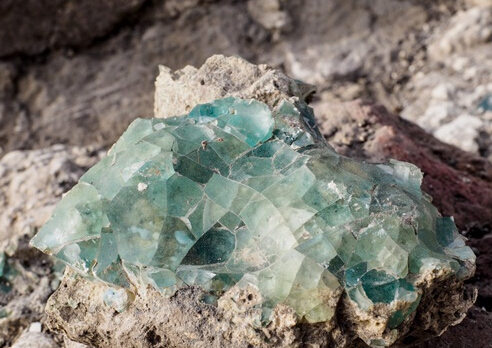Ancient Roman Glass Kilns Unearthed in Israel
From:Discovery News NetWriter:Date:2016-04-12
Israeli archaeologists have unearthed the remains of the oldest kilns in the country, finding the location where commercial quantities of raw pale green “Judean glass” were produced.The roughly 1,600-year-old kilns served the entire Roman Empire, according to a statement by the Israel Antiquities Authority (IAA). They indicate that “the Land of Israel was one of the foremost centers for glass production in the ancient world,” the IAA said.
“We know from historical sources dating to the Roman period that the Valley of Akko was renowned for the excellent quality sand located there, which was highly suitable for the manufacture of glass,” said Yael Gorin-Rosen, head curator of the Israel Antiquities Authority Glass Department.

She noted that chemical analyses conducted on glass vessels from this period which were discovered at sites in Europe and in shipwrecks in the Mediterranean basin pointed to Israel as the source of the glass.
“Now, for the first time, the kilns have been found where the raw material was manufactured that was used to produce this glassware,” she said.
Dating to the Late Roman period, the kilns were discovered by chance last summer at a site near Haiifa before the construction work that was part of the Jezreel Valley Railway Project.
“We exposed fragments of floors, pieces of vitrified bricks from the walls and ceiling of the kilns, and clean raw glass chips. We were absolutely overwhelmed with excitement when we understood the great significance of the finds,” said archaeologist Abdel Al-Salam Sa’id, an inspector with the Israel Antiquities Authority.
Further excavation revealed the production site consisted of two compartments. There was a firebox where kindling was burned to create a very high temperature, and a melting chamber in which clean beach sand and salt, the raw materials for the glass, were inserted and melted together at a temperature of about 2,200 Fahrenheit degrees.
The glass was heated for a week or two until enormous chunks of raw glass were produced, some of which weighed over 10 tons.
At the end of the manufacturing process the kilns were cooled and the large glass chunks that were manufactured were broken into smaller pieces and sold to workshops where they were melted again in order to produce glassware.
We know from a price edict circulated by the Roman emperor Diocletian in the early fourth century A.D., that there were basically two kinds of glass: the light green Judean glass, from Israel, and the more expensive Alexandrian glass from Egypt.
Glass was used in almost every household from the Roman period onward, also employed in the construction of public buildings in the form of windows, mosaics and lighting fixtures.
Large quantities of raw glass were therefore prepared on an industrial scale in specialized centers such as the one unearthed near Haifa.
“This is a sensational discovery and it is of great significance for understanding the entire system of the glass trade in antiquity,” said Ian Freestone, an expert on the ancient technologies of glass at University College Lyndon.
“This is evidence that Israel constituted a production center on an international scale; hence its glassware was widely distributed throughout the Mediterranean and Europe,” he added.

